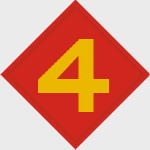Hobby Master HG4201 USMC 1/4-Ton Willys Jeep with Bantam T3 Trailer - HQ, 2nd Battalion, 14th Marine Artillery, 4th Marine Division, Iwo Jima, February 1945 (1:72 Scale)
"In war there is no second prize for the runner-up."
- General Omar Bradley
 Developed by the Quartermaster Corps, the jeep and other motor transport vehicles were transferred to the Ordnance Department in August 1942. Despite its lightweight, the jeep could perform a variety of functions, including towing a 37mm antitank gun over a 7% grade. Unencumbered, the jeep could climb a 60% grade, and was capable of attaining speeds in excess of 60-mph on a level highway. It could ford a stream 18-inches deep, even when fully equipped and loaded. It had a cruising range of approximately 300 miles on 15 gallons of gasoline. Operated by a crew of two, the jeep had a space in the rear for equipment or additional personnel.
Developed by the Quartermaster Corps, the jeep and other motor transport vehicles were transferred to the Ordnance Department in August 1942. Despite its lightweight, the jeep could perform a variety of functions, including towing a 37mm antitank gun over a 7% grade. Unencumbered, the jeep could climb a 60% grade, and was capable of attaining speeds in excess of 60-mph on a level highway. It could ford a stream 18-inches deep, even when fully equipped and loaded. It had a cruising range of approximately 300 miles on 15 gallons of gasoline. Operated by a crew of two, the jeep had a space in the rear for equipment or additional personnel.
Pictured here is a 1:72 scale replica of a USMC Willys Jeep with a Bantam T3 trailer that was attached to the HQ of 2nd Battalion, 14th Marine Artillery, 4th Marine Division, then fighting on Iwo Jima during February 1945.
Sold Out!
Dimensions:
Length: 2-1/2-inches
Width: 1-1/4-inches
Release Date: February 2010
 Historical Account: "Semper Fi" - The 4th Marine Division was formed by the organization and redesignation of several other units. The 23rd Marine Regiment began as infantry detached from the 3rd Marine Division in February 1943, the same month that an artillery battalion of the 12th Marines became the genesis of the 14th Marines and engineer elements of the 19th Marines formed the nucleus of the 20th Marines. In March, the 24th Marine Regiment was organized, and then in May it was split in two to supply the men for the 25th Marines.
Historical Account: "Semper Fi" - The 4th Marine Division was formed by the organization and redesignation of several other units. The 23rd Marine Regiment began as infantry detached from the 3rd Marine Division in February 1943, the same month that an artillery battalion of the 12th Marines became the genesis of the 14th Marines and engineer elements of the 19th Marines formed the nucleus of the 20th Marines. In March, the 24th Marine Regiment was organized, and then in May it was split in two to supply the men for the 25th Marines.
This war-time shuffling provided the major building blocks for a new division. The units were originally separated, however, with the 24th Marines and a variety of reinforcing units (engineer, artillery, medical, motor transport, special weapons, tanks, etc.) at Camp Pendleton in California. The rest of the units were at Camp Lejeune, North Carolina. This East Coast echelon moved to Pendleton by train and transit of the Panama Canal in July and August. When all the units were finally together, the 4th Marine Division was formally activated on August 14th, 1943, with Major General Harry Schmidt in command.
After intensive training, it shipped out on January 13th, 1944, and in 13 months made four major amphibious assaults, in the battles of Kwajalein (Roi-Namur), Saipan, Tinian, and Iwo Jima, suffering more than 17,000 casualties. It was awarded two Presidential Unit Citations and a Navy Unit Commendation, and then deactivated November 28th, 1945.


